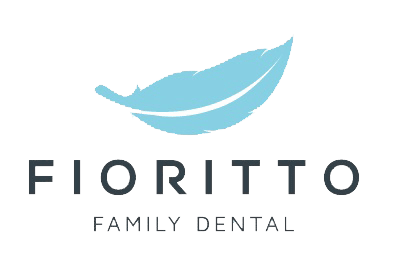Sleep apnea and dental appliances – Ask yourself these questions; Do you have a tough time staying awake during the day? Does your partner complain about your snoring? These are two of the symptoms associated with a condition called obstructive sleep apnea. Every night, more than 22 million people go to sleep and suffer from sleep apnea. What’s worse, most people are unaware that they have a diagnosable medical problem. In fact, experts suggest around 80 percent of sleep apnea cases go unreported.
Obstructive sleep apnea is treatable! A variety of dental appliances can aid in reducing the effects of this condition. It’s important to speak with your Fioritto Family dentist to start exploring potential solutions for your sleep apnea.
What is obstructive sleep apnea?
Far and away, the most common type of sleep apnea is obstructive sleep apnea. This condition results when your throat muscles relax and block your airway, resulting in a momentary loss of oxygen.
Besides snoring and fatigue, obstructive sleep apnea can lead to night sweats, decreased libido, mild headaches in the morning, high blood pressure, waking up suddenly and more. In severe cases, obstructive sleep apnea can lead to a stroke.
If your snoring is disrupting others, or you’re waking up with the sensation that you’re choking or you can’t breathe, you should consult a physician. They’ll very likely suggest that you consult with a dentist, since there are dental appliances that can relieve your symptoms.
Dental solutions for sleep apnea
There are two major types of dental appliances used to treat sleep apnea. Both look like a mouthguard; however, there are some slight differences in their function.
- Mandibular Advancement Devices (MADs): The most common type of dental appliance used for patients is a mandibular advancement device. The apparatus fits around the upper and lower teeth, pushing the jaw forward to prevent the throat muscles from blocking the airway.
- Tongue Retaining Mouthpieces: For people who cannot have their jaw repositioned, a tongue retaining mouthpiece uses a slight suction to keep the tongue and throat forward.
After your dentist determines which type of appliance will work best to treat your obstructive sleep apnea, we will create a custom-designed mouthpiece. Though over-the-counter options are available, it’s recommended that you go with a custom fit for the best results.
Why choose a dental appliance over a CPAP?
The alternative to a dental appliance is a CPAP machine. These machines fit over the wearer’s nostrils and regulate the air pressure in the throat. The result is largely similar to a MAD or tongue retaining mouthpiece. That said, people who opt for a CPAP over a dental device often complain that the machines are uncomfortable to wear. Sleepers with a tendency to toss and turn also note occasionally getting caught in the cords and tubes that connect to the primary device.
A dental appliance, meanwhile, is easy to transport and is often considered more comfortable than a CPAP. If you’re a sleep apnea sufferer and want to explore a dental appliance for this condition, contact Fioritto Dental today to schedule a consultation appointment. Good sleep is already hard to come by—let us help you make it a little easier, even in spite of obstructive sleep apnea.
